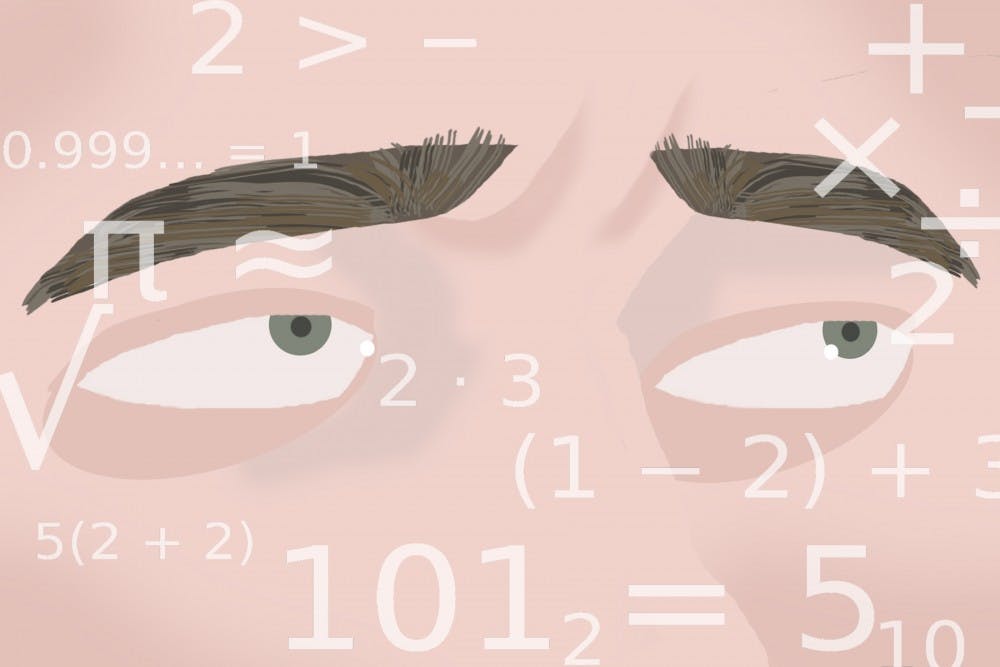While language-based artificial intelligence systems, such as ChatGPT, are notorious for their use as cheating tools, AIs have been doing math for much longer. Instead of doing your homework for you, new developments in AI are being applied to a much more difficult subject: teaching humans how to do math.
On April 19, Peter Relan spoke at the ASU+GSV Summit about MathGPT, a new AI tool designed to revolutionize the way students of all ages learn math from textbooks.
Peter Relan is an investor and a board member for Got It Education, the creators of MathGPT and other virtual learning tools. His panel was on the use of technology in the classroom, where AI was in the spotlight as the tool of the future.
Earlier this year, ChatGPT became a subject of discussion and controversy because it could be used as a cheating method in classes. Unlike ChatGPT, MathGPT is trained using textbooks, and is meant to be an engaging educator of the original textbook.
READ MORE: ChatGPT worries professors, excites them for the future of AI
"There's a chatbot that totally understands my textbook, and we are in the process of building textbook by textbook, not like a generic chatbot like ChatGPT … You can just talk in English, you just chat with your book," Relan said.
In practice, this looks like a table of contents with a chat screen. MathGPT is meant to both lecture and respond to provided answers. Relan also explained that it gives students assessments to provide real-time data to teachers.
"If the classroom is working with MathGPT, the entire class is working away and you're getting real time data … Students are now identified (for) you and you can say, 'Hey this part of the class is struggling with this section'," Relan said.
This is another area where MathGPT differs from programs like ChatGPT, because it is designed to be used in conjunction with a classroom.
"Teachers are our advisors right now, and when we pilot it, hopefully, this summer, is when we plan to bring the teachers into using the product," Relan said.
MathGPT is still in development, but it does have some notable planned features. This includes a video mode, where students can choose their "teacher" and learn from photorealistic avatars of famous figures like Albert Einstein or Isaac Newton.
MathGPT is currently based on an OpenStax algebra textbook, which is open-source and free to use. Relan discussed that they hope to train the AI on even more textbooks, for all grade levels and topics.
"We may look back in five years and say that this is the reinvention of the printing press as we knew it, that the moment when it was reinvented was through projects like MathGPT," he said.
While MathGPT is being developed, the math education field is also exploring educational solutions that do not require AI.
Carla van de Sande is an associate professor in the School of Mathematical and Statistical Sciences. She helped develop the Keep in School Shape program to give undergraduate students daily math problems during school breaks to keep them in practice for the next year.
To van de Sande, math education is about problem-solving, and learning these skills requires some element of human connection and engagement.
While learning math formulaically is functional for the classroom, it neglects the development of larger problem-solving skills. Meaning that when encountering something new, the learner might not have the adequate tools to approach the problem.
"I think it's important that (students) get that sense that there's a connection and we're developing a relationship between instructors and the students. It's not just (us) providing material for you to learn," van de Sande said.
Dov Zazkis, an assistant professor in the School of Mathematical and Statistical Sciences, echoed the importance of foundational skills in math education.
"(I want) for them to understand what professional mathematicians do, for them to have a glimpse of that creative process, to be the kind of people who are going to solve not just a current problem, but for them to leave my classes and tackle problems," Zazkis said.
Technology has been used in math education as long as the two have coexisted. Zazkis discussed that when he was an undergraduate student, one of his professors was working on improving Maplesoft, an advanced computational software.
"Maple is like a scientific computing software, it's like MATLAB … so from my perspective, the MathGPT program seems like an extension of stuff that we’ve been studying, and gluing pieces together," Zazkis said.
While MathGPT primarily focuses on education, programs such as Maple are merely tools; entire classes are necessary to learn to use them. Both tools are opportunities for learning and problem-solving at different stages of understanding, and neither make a math classroom obsolete.
"The type of math we need to know is constantly evolving with technology … we used to teach you how to calculate a square root by hand, now we just need to know the concept of the thing and the computer can do the heavy lifting," Zazkis said. "I think as technology advances, the heavy lifting the computers can do will increase, but you'll have to understand what the computer is doing more."
Edited by River Graziano, Jasmine Kabiri and Grace Copperthite.
Reach the reporter at syramir2@asu.edu and follow @nerdyoso on Twitter.
Like The State Press on Facebook and follow @statepress on Twitter.
Sophia RamirezManaging Editor
Sophia is a senior studying biological sciences. This is her fifth semester with The State Press. She has also worked as a science and technology reporter.
Continue supporting student journalism and
donate to The State Press today.




